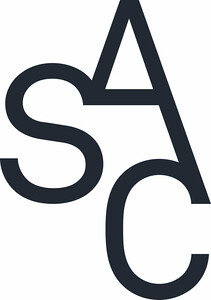Symposium
May 25–26, 2018
Hochschule für Bildende Künste - Städelschule
Dürerstrasse 10
60596 Frankfurt am Main
Germany
Hours: Monday–Friday 9am–6pm
T +49 69 60500869
architecture@staedelschule.de
The Städelschule Architecture Class invites to a two-day symposium on May 25–26 addressing art, architecture and virtual reality. The conference, “Breaking Glass—Virtual Reality and Becoming a Subject through Arts and Architecture,” raises questions pertaining to these creative disciplines, human perception and the formation of the contemporary self in relation to the emerging importance of virtual reality.
Virtual reality is currently causing a stir in art and architecture. The technology suggests a radical break with known conventions for creative work as much as individual experience. Virtual reality demands the design of whole new worlds with potentially new spatial qualities in relation to which the human subject must locate itself.
The symposium at the Städelschule seeks to locate the mondial impact of the technology in the arts and architecture as a productive momentum centring on the subject. Given the immersive and ultimately architectural space of virtual reality, what are the parameters for the creative and experiencing subject engaging with this technology? What does the history of art and architecture tell us with respect to the new creative opportunities in this medium? How do we position the subject within our image-driven culture in relation to virtual reality’s simulation of reality and alternative narrational structure? How can bodily performance and experience be comprehended with respect to the regime of images in virtual reality? And, finally, how can this multi-sensorial realm be comprehended in a coordinated and strategically productive manner?
The title of the event summons glass as the chief material means for the production and conveyance of our image culture and reverberates with how Marcel Duchamp delivered his main work, Le Grand Verre (“The Large Glass,” 1915–23), to posterity. The Large Glass—with its cracked glass panels, his autobiographical allusions and radical take on the floating picture plane within its given setting, could be seen to foreshadow virtual and augmented realities as they exist today. Moreover, the contemporary creative as well as experiencing subject was heralded in the bi-gendered subjectivity of Duchamp a.k.a. Rrose Sélavy in 1921. Under his female alter ego, Duchamp created numerous works and Rrose Sélavy is in and of itself a work of art.
With virtual reality becoming a cause célèbre in art and architecture, essential questions arise regarding processes of subjectification—echoing those that emerged amidst the technological and social revolutions throughout the 20th century. Based on Michel Foucault’s notion of the dispositif, the Italian philosopher Giorgio Agamben suggests that subjects as much as institutions are produced by an increasing number of apparatuses that “appear at the intersection of power relations and relations of knowledge.” These philosophical observations are echoed in more recent attempts at unravelling the hidden infrastructure of the digital to address how the contemporary subject and its collective are politically engendered and socially staged—such as in the writings of Benjamin Bratton and Keller Easterling.
“Breaking Glass—Virtual Reality and Becoming a Subject through Art and Architecture” presents an interdisciplinary approach to speculate on these and related questions.
The symposium commences Friday, May 25 at 5:30pm with a keynote talk by the world-renown neurophysiologist Wolf Singer. After the presentation, architectural theorist Sanford Kwinter, Allese Thomson, writer and executive producer in experiential technologies, and the former dean of Städelschule and current director of the Museum of Modern Art in Stockholm, Daniel Birnbaum, engage in conversation with Singer.
The programme continues with presentations and discussions on Saturday, May 26 at 10am. Presenters include: the internationally recognised artists Rachel Rossin, Timur Si-Qin and Shezad Dawood, architect Damjan Jovanovic, virtual reality producer Dado Valentic, and art historian Lars Bang Larsen.
For more details on the programme, see here.



